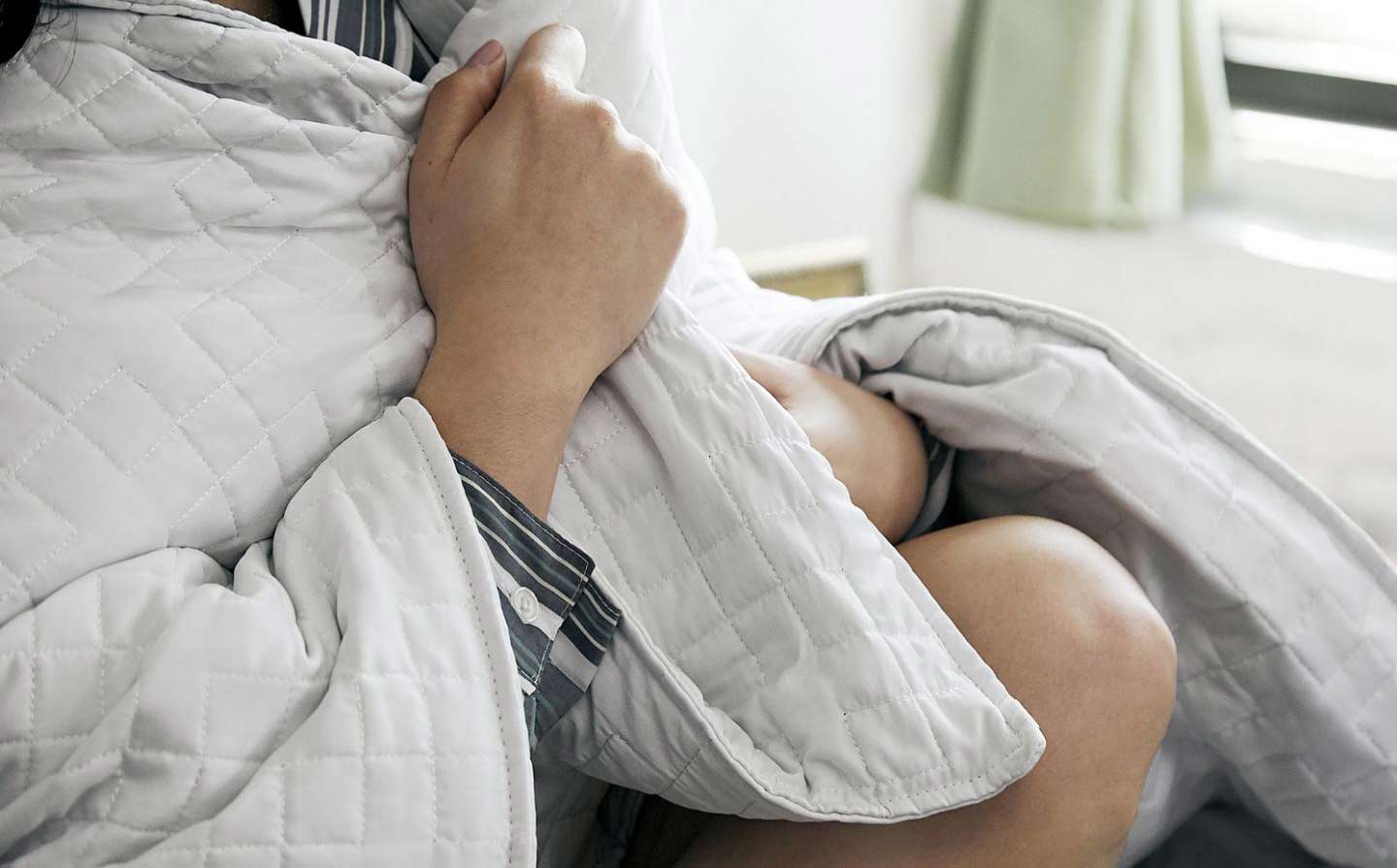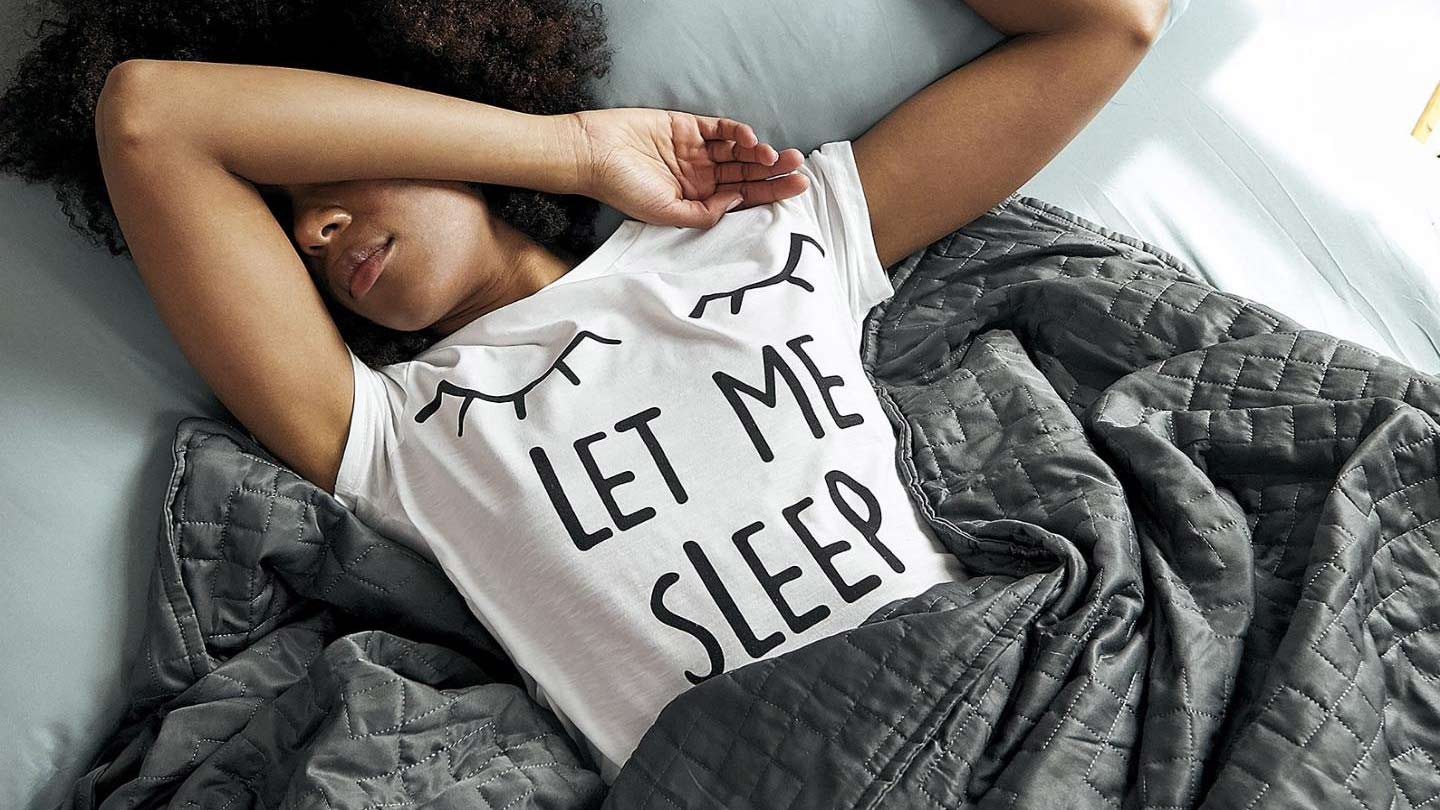Weighted blankets: what you need to know

Remember the Gravity Blanket, that high-tech blanket that raised almost $5 million on Kickstarter in 2017?
That's now one of the world's best weighted blankets. These used to be a therapist's tool but have since exploded into the mainstream in the past two years. If you feel like everyone you know is buying, talking about or researching these blankets, you're not alone.
So what is a weighted blanket and do you need one? Read on for answers...
What is a weighted blanket used for?
Weighted blankets are filled with glass, plastic beads or other pellets that make them much heavier than a standard blanket. If you've ever used a neck pillow or hot wrap filled with microbeads, a weighted blanket feels a bit like that.
What are the benefits of a weighted blanket?
There's not yet a lot of conclusive research on the benefits. As is the case with many sleep aids, from white-noise machines to melatonin pills, not everything will work for everyone. Traditionally, weighted blankets have been used in clinical settings to help patients with conditions like autism to focus on sensory experiences, and to calm emotions and nerves.
Today, manufacturers tend to tout their blankets as relaxation tools to prevent both anxiety and insomnia. In theory, a heavier cover does a better job of molding to your body, making you more comfortable and secure. It also puts up more resistance, making it harder for you to toss and turn, and slowing down your heart rate and breathing.
Some research also indicates that the sensation of "slow, gentle touch" may activate areas of a user's brain that process emotion, and help create pleasant sensations. If you've had a backrub or massage before, you may have experienced this.
Get instant access to breaking news, the hottest reviews, great deals and helpful tips.

Other experts claim that by replicating the sensation of hugging, weighted blankets can increase production of oxytocin (known to facilitate relationships and bonding), dopamine and melatonin, and even reduce sleepwalking.
But most of the studies done on this topic are small, and there's no consensus in the scientific community about the efficacy of these blankets. A 2012 study published in Australasian Psychiatry found that weighted blankets in an inpatient facility decreased users' anxiety and stress, while a 2014 study found no difference between real weighted blankets and placebo blankets when it came to helping autistic children to sleep.
A 2016 study published in the Journal of the Formosan Medical Association found that participants who wore a weighted blanket during wisdom-tooth extraction experienced more positive emotions. However, the authors noted that further research into the matter is necessary.
How much do they cost?
Weighted blankets vary in price, but most cost over $100. Blankets for small children can hover between $50 and $70, while queen- and king-size blankets can run upward of $190, and cooling blankets are often over $200.
Amazon's best-selling model, the YnM Weighted Blanket, ranges from $49.90 to $199. Another best-seller, the Quility Premium Weighted Blanket goes for $69.70 to $189.70. Pricing varies based on the weight and size of your product.
Are there any drawbacks?
Weighted blankets have a few downsides that are worth keeping in mind. For one, as heavy blankets do, they can get quite hot. If this is a particular concern for you, there are some weighted blankets specifically designed to keep you cool. Partners can also complicate things: If the two of you are different sizes, it may be hard to find a blanket that's comfy for both of you.
As with any product, there are pros and cons. It's important to know yourself, your needs and your sleep habits to determine if a weighted blanket is right for you. It may also be worth giving your product of choice a test run — some manufacturers, such as Blanquil, offer trial periods and flexible return policies.

Is it safe for kids to sleep with a weighted blanket?
Experts don't recommend that weighted blankets be given to kids under 8 without a doctor's permission. Younger children could risk suffocation.
Are there cooling versions available?
If you're interested in a weighted blanket, but are worried that you'll be too toasty beneath it, you may want to look into a cooling weighted blanket. Products like the Coolmax Weighted Blanket and the Blanquil Chill are made of breathable fabric that redistributes your moisture and vents you at night.
Can you make one yourself?
You can make a weighted blanket if you have fabric, pellets and time to assemble it. As with any DIY project, however, you’ll need to take a realistic look at the time, materials and skill you have before committing to the project, and keep your expectations realistic.
If you've decided to make your own product, you can find instructions and patterns across Pinterest, craft websites and sleep blogs.
Monica Chin is a writer at The Verge, covering computers. Previously, she was a staff writer for Tom's Guide, where she wrote about everything from artificial intelligence to social media and the internet of things to. She had a particular focus on smart home, reviewing multiple devices. In her downtime, you can usually find her at poetry slams, attempting to exercise, or yelling at people on Twitter.

